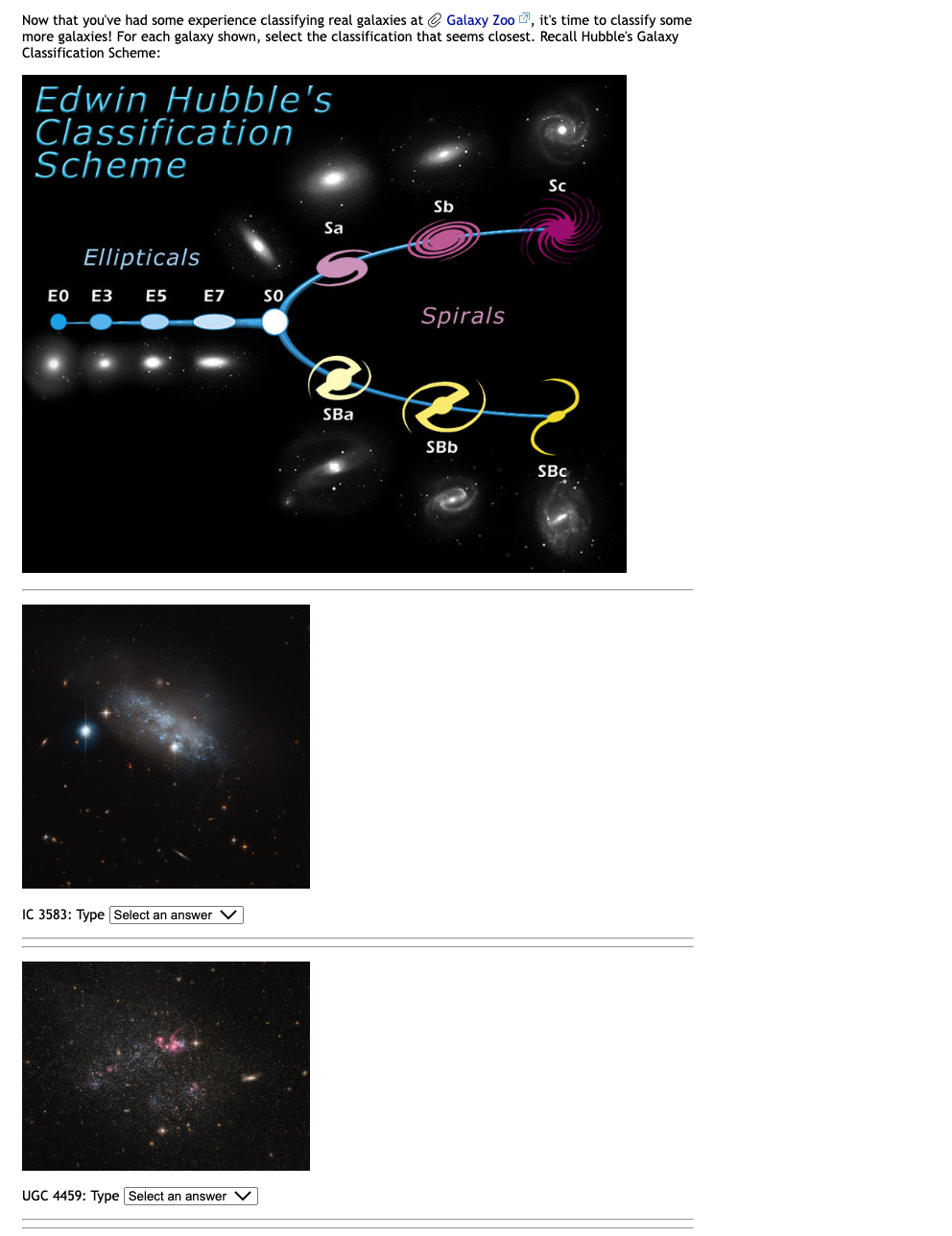Using Open Educational Resource Assessments in Astronomy Education
Joshua Tan LaGuardia Community College
Text based in part on this paper published in the Astronomical Society of Pacific conference proceeding ASP2020: Embracing the Future: Astronomy Teaching and Public Engagement.
As an astronomy educator at City University of New York (CUNY)–LaGuardia, I aim to provide the equivalent quality of astronomy education that would happen at any other institution of higher learning. But without teaching assistants or graders, the task of assessing student learning through problem sets or examinations is very time consuming. While traditional textbook companies publish supplemental online assessment modules, this requires students to pay for the privilege of doing homework and taking exams. Many of my students, I know, struggle with this extra expense.
Is there a better way? I believe there is a better model provided by the Open Educational Resources (OER) movement. OER seeks to apply principles of Open Access and the Open-source Software Movement to educational resources to make them available for reuse, sharing, and modification. Perhaps the most famous astronomy OER resource to date is the OpenStax Astronomy text, which, along with supplemental educational materials, is made freely available by Rice University. Under a “copy left” (as opposed to copyright) model of content exchange, the Creative Commons licensing that accompanies the OpenStax Astronomy allows for free reproduction and even modification of the materials with attribution. This wonderful resource has a lot of value-added products, but the equivalent of an online assessment module that can be used to automatically grade student work is not yet part of the distribution.
Happily, there is an open-source software package called the Internet Mathematics Assessment System (IMathAS), published by Prof. David Lippman of Pierce College, Washington, that provides much of this functionality. Basing it on the programming language PHP, Lippman developed a platform that can function as a standalone Learning Management System able to compete with the likes of Blackboard, Moodle, or Canvas. IMathAS provides an assessment authoring platform where questions of varying types can be randomized, given conditional functionality, and shared among colleagues. Quantitative, multiple-choice, essay, and even graphing and drawing questions are possible. An instance of IMathAS is hosted at a free-to-use website at MyOpenMath. There, instructors can create assignments that are either automatically graded or can be systematically reviewed as in the case of free answer or image upload. Already, more than 1,200 questions have been written and shared by astronomy educators for use by anyone with an instructor account.
How does the system work? An instructor sets up a free account on the MyOpenMath server or, conversely, forks an instance of IMathAS to set up their own server. All instructional content can be developed from within courses created by the instructor, which can be set up with customization options that allow for varying degrees of flexibility or rigidity as each teacher desires. Assignments can then incorporate questions from the existing libraries or new questions can be developed by the instructor and either kept private or shared with the wider community.

The platform has the capacity to randomize many aspects of the assessments. For example, a question might randomly select items from a database, choose a random number, or show different images (say, phases of the Moon) depending on the instantiation. With some care, individual questions can be written so that a different version is given to each student in the class, thus allowing students to work together without the risk that they are simply copying a friend’s answer. Alternatively, a group of similar questions can be banked with a random selection assigned to each student. The hundreds of questions in the OpenStax Astronomy test bank have been saved in the MyOpenMath library for that purpose, consistent with the Creative Commons license under which they are provided.
Since the IMathAS interface is based on PHP and HTML, it is straightforward to include interactive features including simulation applets and embedded scripts (below is a partial list). My collaborators and I have authored complete virtual laboratory investigations that include such features as hypothesis testing, data collection, and scaffolded design. These can be used as a supplement or replacement for in-person laboratory work, which allowed us to use virtual laboratory work through the distance-learning portion of the pandemic.
If you are interested in joining our community of OER auto-graded homework developers, I encourage you to start an account at MyOpenMath and enroll in class 108874, which will show some examples of the platform’s capabilities. Then start an instructor account and begin to build your own open assessment tool that your students can use without having to pay additional licensing fees.
List of Online Astronomy Laboratory Simulations and Applications
This list is based in part by the resources outlined in this paper published in the Astronomical Society of Pacific’s conference proceeding ASP2020: Embracing the Future: Astronomy Teaching and Public Engagement.

